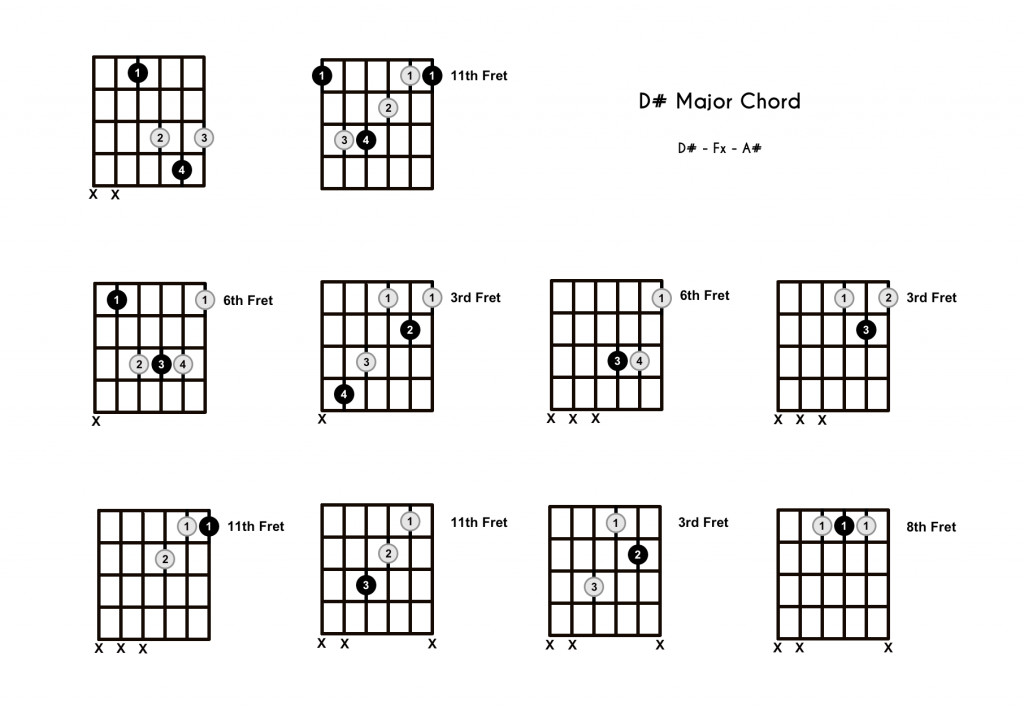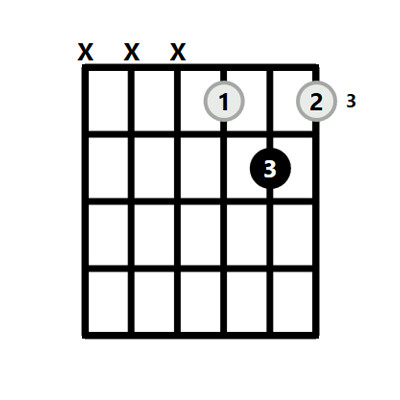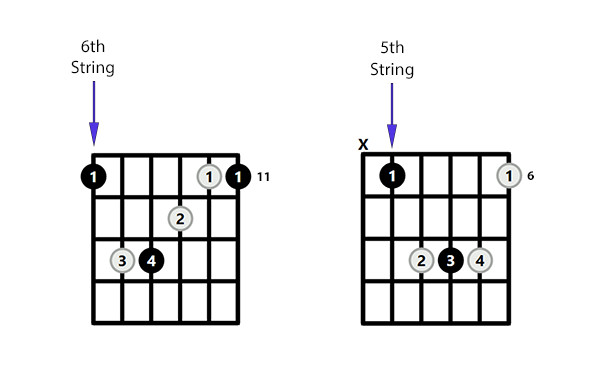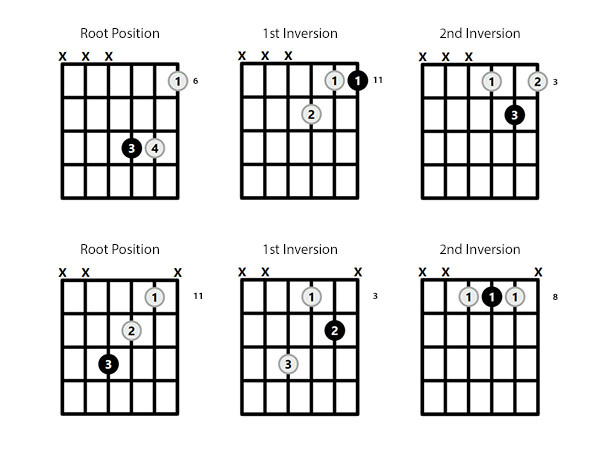The D# guitar chord, often referred to as Eb due to its enharmonic equivalence, might seem a bit elusive to some guitarists. While Eb is more commonly discussed, understanding the D# major chord is essential for a comprehensive grasp of music theory and guitar playing. This guide will break down the D# chord, exploring its theory, various shapes, and practical applications on your guitar.
Delving into the Theory of the D# Major Chord
To truly understand a chord, it’s crucial to know its theoretical foundation. The D# Major chord is built upon the D# Major scale, utilizing the 1st, 3rd, and 5th degrees of that scale.
- Notes in the D# Major Chord: D#, Fx (F double sharp), and A#. It’s worth noting that Fx is enharmonically equivalent to G, which can sometimes cause confusion but is theoretically accurate in the context of the D# Major scale.
- Intervals: Like all Major chords, the D# chord follows a specific interval pattern from its root note (D#): Major 3rd, minor 3rd, and Perfect 4th (returning to the root).
- Key of D# Major: The D# Major chord is the tonic (I) chord in the key of D# Major. The complete set of chords in this key are: D#, E#m, Fxm, G#, A#, B#m, and Cx diminished.
While theoretically sound, the D# major key and chord can appear complex due to the presence of double sharps. However, understanding this enharmonic relationship and the underlying theory simplifies its application on the guitar.
Exploring 10 Shapes for the D# Major Chord
Visualizing chord shapes is key for guitarists. Here are 10 different ways to play the D# Major chord across the fretboard.
 D# Major Chord – 10 Shapes
D# Major Chord – 10 Shapes
The Standard D# Chord Shape: The Root 5 Barre
The most frequently used D# chord shape is a barre chord, rooted on the 5th string. This is essentially the E major barre chord shape moved up to the 6th fret. Often, the index finger might not fully barre across all strings but rather focuses on pressing down the root note on the 6th fret.
 D Sharp Chord Guitar
D Sharp Chord Guitar
The Easy D# Chord Shape: A Simplified Approach
For beginners or quick chord changes, an easier version of the D# chord exists. This shape utilizes only the top three strings and mirrors the open D chord shape, simply shifted up one fret. It’s a great starting point if full barre chords feel challenging.
 Easy D Sharp Chord Guitar
Easy D Sharp Chord Guitar
Step-by-Step Guide to Playing the Standard D# Major Chord
Let’s break down the standard D# barre chord shape into simple steps:
- Index Finger: Place your index finger on the 6th fret of the 5th string (A string).
- Middle Finger: Position your middle finger on the 8th fret of the 4th string (D string).
- Ring Finger: Place your ring finger on the 8th fret of the 3rd string (G string).
- Pinky Finger: Place your pinky finger on the 8th fret of the 2nd string (B string).
- Strumming: Avoid strumming the 6th string (low E string) and strum down from the 5th string to the 1st string.
Following these steps ensures you are correctly playing the most common D# Major chord shape. This detailed instruction can be particularly helpful if you’re unsure about your finger placement.
Barre Chord Variations for D# Major
Beyond the root 5 barre, the D# chord can also be played as a root 6 barre chord. This involves using the A major barre chord shape and positioning it at the 11th fret. Both root 5 and root 6 barre shapes provide versatile ways to play the D# chord across the neck.
 D Sharp Barre Chord Guitar
D Sharp Barre Chord Guitar
D# Major Triads: Inversions and Voicings
Triads offer a more concise and often melodically interesting way to play chords. The D# Major triad, comprising D#, Fx, and A#, can be played in three inversions:
- Root Position: D#, Fx, A#
- 1st Inversion: Fx, A#, D#
- 2nd Inversion: A#, D#, Fx
Here are several ways to play these D# Major triad inversions on the guitar:
 D Sharp Major Triad Guitar
D Sharp Major Triad Guitar
Musical Context: Keys Featuring the D# Chord
Understanding where a chord fits musically is crucial. The D# Major chord naturally appears in the following keys:
- D# Major: (D#, E#m, Fxm, G#, A#, B#m, Cxdim) – As the tonic chord.
- A# Major: (A#, B#m, Cxm, D#, E#, Fxm, Gxdim) – As the dominant chord (IV).
- G# Major: (G#, A#m, B#m, C#, D#, E#m, Fxdim) – As the dominant chord (V).
Knowing these key contexts helps you understand how the D# chord functions within chord progressions and song arrangements.
Chord Substitutions for D# Major
In certain musical situations, you might explore substituting the D# Major chord with related chords. Effective substitutions for D# include:
- D# sus 4
- D# sus 2
- D# add 9
Conversely, the D# Major chord itself can serve as a simplified substitute for more complex chords built on the same root, such as the D# Major 7 or D#7. However, it’s important to note that D# Major cannot substitute for minor chords.
Scales for Soloing and Improvising Over the D# Chord
For soloing or creating melodies over a D# Major chord, certain scales work particularly well. Effective scales to use include:
- D# Major Scale
- D# Pentatonic Major Scale
- D# Lydian Mode
Experimenting with these scales will unlock melodic possibilities when playing over the D# Major chord.
Expanding Your Chord Knowledge
Understanding and mastering the D# guitar chord opens up new musical avenues. By exploring its theory, shapes, and usage, you can enhance your guitar playing and musical vocabulary. Continue to practice these shapes and explore the related musical concepts to solidify your understanding.
[
